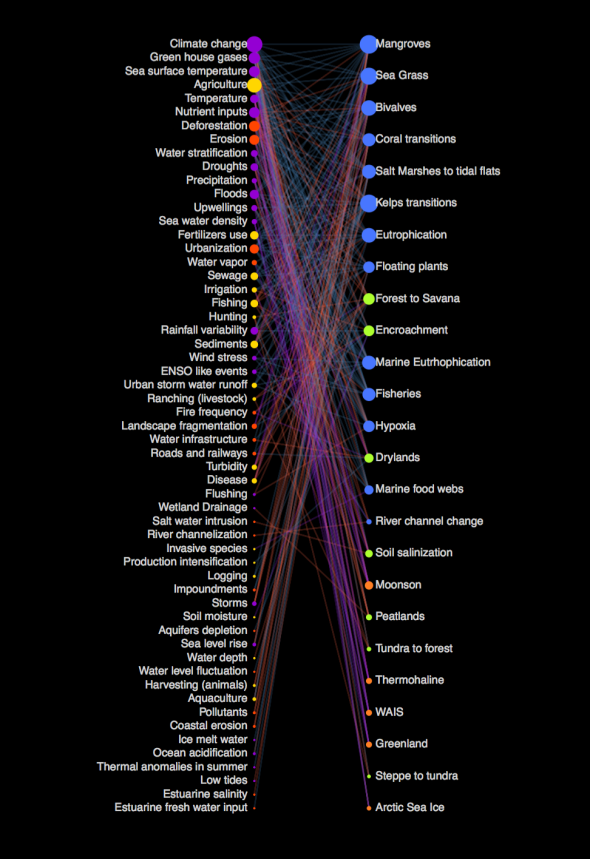What are the main drivers of regime shifts globally?
That was one of the key questions that inspired my PhD work. There is a buzz both in the media and the scientific literature that we are approaching a dangerous zone where the stability of the world ecosystems are at stake. Coral reefs are struggling and under a 2ºC warming scenario they will most likely disappear from many areas of the world. Every summer we hear of new ice free records in the Arctic while last few months there has been a consensus that Antarctica is also warming at a higher rate than previously expected. As today, boreal forest in Canada is burning at remarkably higher rates than usual. This year droughts have impacted strongly California and Brazil, with potential impacts on US food production and carbon storage in the Amazon respectively. Things are happening as ‘we speak’ and yet our knowledge about critical transitions in ecosystems is limited and often confined to well understood case studies (e.g. Jamaican coral reefs) and theoretical models. To the best of my knowledge, comparison of regime shifts exist for a handful of systems such as climate, agricultural landscapes, hydrological regime shifts, coral reefs and marine ecosystems.
Yesterday our paper Regime Shifts in the Anthropocene: Drivers, Risks, and Resilience was published in PlosONE. It address the question ‘What are the main drivers of regime shifts?’ by studying co-occurrence patterns of drivers reported by the regime shift database. It is the first large comparison of regime shift and their drivers, in fact we analysed 25 regime shifts types in marine (blue), terrestrial (green) and polar/subcontinental (orange) ecosystems. The figure below shows a network of drivers (57) on the left and regime shifts (25) on the right. The bigger the dot, the higher is the number of connections, which is is a proxy of the number of drivers a regime shifts has reported, or the number of regime shifts a driver is reported to cause. While nodes in the bottom show idiosyncratic drivers and regime shifts, the ones on the top are generalist, this is the most common drivers and the regime shifts with higher drivers diversity.
The main results of our work is that drivers related to climate change (e.g. droughts, floods, green house emissions) and food production (e.g. fishing, crops, use of fertilisers) are the main responsible for regime shifts globally. They co-occur together in patterns that one wouldn’t expect by pure chance, and this associations help us envisage management opportunities and challenges. The opportunities center around the knowledge base. We found that if two regime shifts share certain attributes such as occurring on the same ecosystem type, similar space and temporal scales, and impact similar ecosystem services; we can assume that they are caused by similar sets of drivers and therefore transfer successful management strategies from well-understood regime shifts to less understood ones. The challenge is to embrace drivers diversity. Addressing only well understood variables won’t preclude regime shifts from happening. Our work shows that these phenomena are often caused by a diversity of drivers and addressing them imply co-ordinated actions across scales, especially at the international level.
If you want to know more about our work, just follow the link above. The paper is on a open access journal and the data is also publicly available both in the regime shifts database and the public scientific repository Figshare. I happy to reply to questions or comments here or on the journal’s website.


Leave a comment